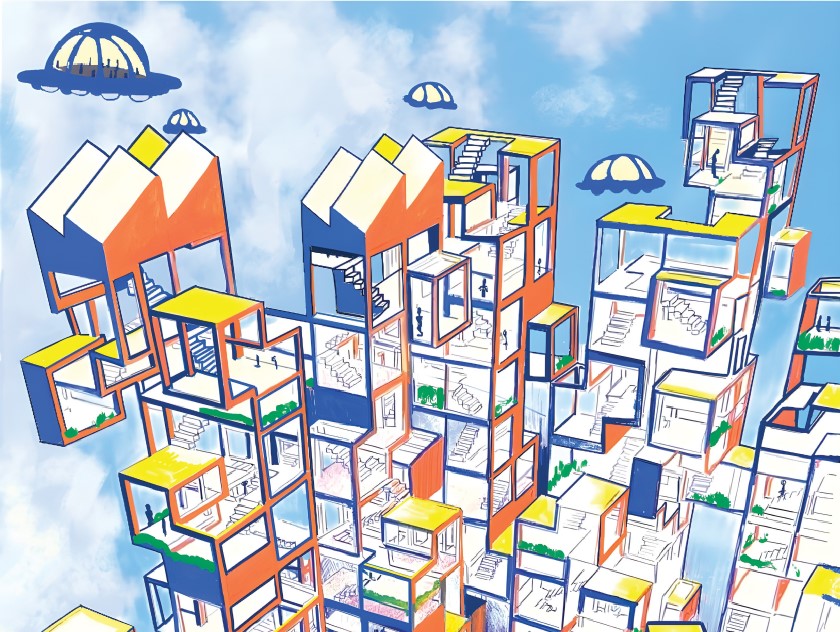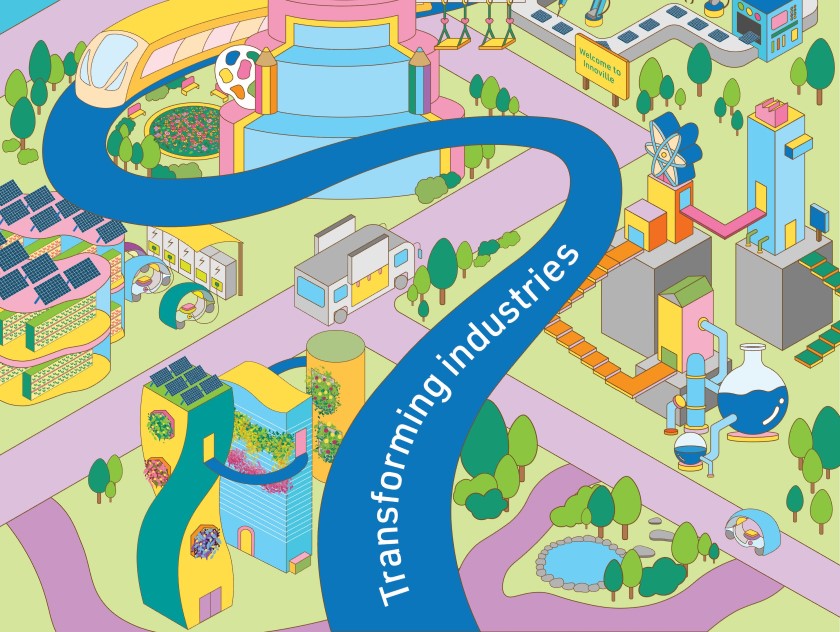Combining the creative flair of students from Nanyang Academy of Fine Arts (NAFA) and the design thinking of architecture students from National University of Singapore (NUS), we present youthful visions of industrial estates of the future.
A heightened appreciation for nature in a high-tech future
The possibility for built industrial environments to evolve and be adapted for the future is vast with the rise of smart technologies, sensors and Artificial Intelligence (AI).
For instance, smart technologies could be used to facilitate the monitoring of production processes, allowing for increased accuracy and quality assurance. New technologies could also help to create a more vibrant and sustainable ecosystem, such as the implementation of green energy initiatives.
These positive steps not only address the evolving needs of industrialists, but also the people working within the estates. AI can help optimise production processes and automate certain activities, resulting in a decrease in man-hours and waste. Advancements in info-comm could also be applied in establishing a community-building programme that would allow local businesses to interact and collaborate with each other.
Indeed, keeping industrialists competitive in the global marketplace while creating a better future for our community is the backbone of the future industrial estate’s design. In the future envisioned, city planning will incorporate smart city technology whereby architects will be able to reduce wasteful practices, increase productivity and drive cost efficiencies. This can be done by understanding urban mobility, energy consumption and the interplay of different types of infrastructure. Currently, climate change and dwindling natural resources threaten humanity. Architects are called upon to tackle these complex problems and develop innovative approaches to resolve them. Adopting environmentally friendly building practices is but one option. Future environmental and climate security can only be ensured by incorporating economic considerations into all aspects of the architecture industry.

In the same vein, there is a need to reduce the amount of trash in landfills to better optimise limited land resource. In the future, land space will be scarce and it is important to make good use of space and energy. Architects could take into consideration three main factors: the materials, how energy-efficient they are and the site. If these key areas are taken into account and a more holistic approach is taken, sustainable design can become the norm in the industry.
Yet the future is not all steel and cement. We foresee a heightened appreciation for nature with the thrust towards sustainability. In our imagined estate of 2050, we have also dreamed up a futuristic and green cityscape — smart, wired, yet decidedly rooted in nature. The industrial estate of 2050 is thus more than a cog in the economic machinery. It is a space for play—a space to connect to a community and a physical manifestation of the dreams youths today have of the future.
Smart Estates — With Roots in Nature is by Aqilah Alwi (Department of Architecture, NUS) and Wong Yun Ting (Diploma in Design [Landscape and Architecture], NAFA).
The story and artwork first appear in 'Dream Factories', a publication by JTC that presents the transformation journey of our industrial estates. To read the rest of the publication, click here.


